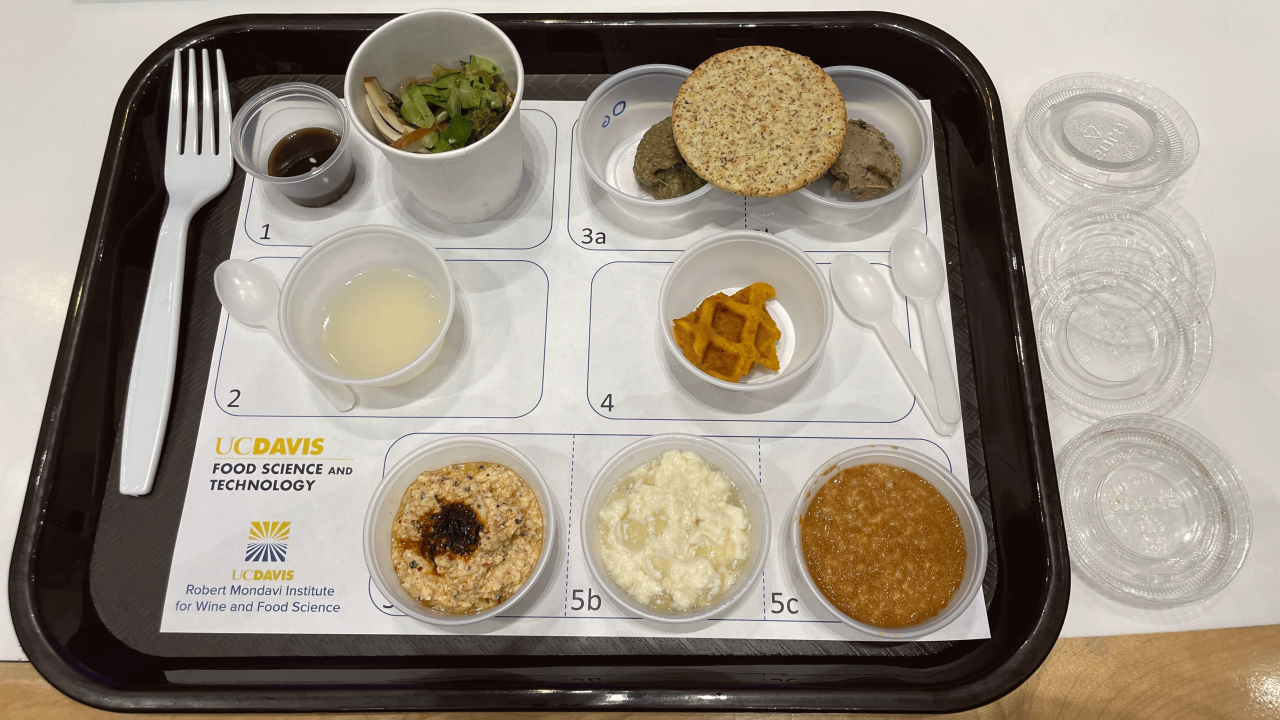
Students Present Their Innovative Food Products
From the College of Agricultural and Environmental Sciences
From concept to container – food science students gave the UC Davis community a taste of their original food creations, including upcycled noodles and a savory vegan waffle.

The innovative products were unveiled during a presentation at the Robert Mondavi Institute’s Sensory Theater and was the culmination of course FST 160 Food Product Development led by Professor Jean-Xavier Guinard and Assistant Professor Andrew Gravelle, both with the Department of Food Science and Technology (FST).
Students spent the 10-week spring quarter developing and refining a prototype, conducting a market analysis and designing attractive packaging and nutrition labels with the goal of introducing a new product for store shelves that consumers would love. About 75 guests tasted samples of the food items during the presentation on June 8.
“I was so excited to share something we created,” said Amber Sun, a fourth-year food science major who developed a fresh noodle meal kit. “A lot of people came up to us and said, ‘This is really good,’ and I wasn’t expecting that.”
Healthy, sustainable, delicious
All the new products had to fall under the theme of: “Healthy, sustainable, delicious.” Students were encouraged to decide how to incorporate those ideas into their products.
“I think they did a fantastic job,” Gravelle said. “To see the final products and how they turned out, I was really impressed.”
During this senior-level class, students take what they’ve learned from their previous coursework on topics including microbial safety, food chemistry and sensory science, and apply it in a product development setting. Guinard and Gravelle also invited guests to discuss various issues, including the use of artificial intelligence in product development, business-related aspects of launching a new product and ways to address food loss and food waste.
“One of the advantages of this course is that it takes a lot of the knowledge they’ve accumulated over the course of their degree and gives them an opportunity to apply it hands-on,” Gravelle said. “They’re not just taking a test on food chemistry or microbiology, they are really applying it and seeing what works.”

The innovative products were unveiled during a presentation at the Robert Mondavi Institute’s Sensory Theater and was the culmination of course FST 160 Food Product Development led by Professor Jean-Xavier Guinard and Assistant Professor Andrew Gravelle, both with the Department of Food Science and Technology (FST).
Students spent the 10-week spring quarter developing and refining a prototype, conducting a market analysis and designing attractive packaging and nutrition labels with the goal of introducing a new product for store shelves that consumers would love. About 75 guests tasted samples of the food items during the presentation on June 8.
“I was so excited to share something we created,” said Amber Sun, a fourth-year food science major who developed a fresh noodle meal kit. “A lot of people came up to us and said, ‘This is really good,’ and I wasn’t expecting that.”
Healthy, sustainable, delicious
All the new products had to fall under the theme of: “Healthy, sustainable, delicious.” Students were encouraged to decide how to incorporate those ideas into their products.
“I think they did a fantastic job,” Gravelle said. “To see the final products and how they turned out, I was really impressed.”
During this senior-level class, students take what they’ve learned from their previous coursework on topics including microbial safety, food chemistry and sensory science, and apply it in a product development setting. Guinard and Gravelle also invited guests to discuss various issues, including the use of artificial intelligence in product development, business-related aspects of launching a new product and ways to address food loss and food waste.
“One of the advantages of this course is that it takes a lot of the knowledge they’ve accumulated over the course of their degree and gives them an opportunity to apply it hands-on,” Gravelle said. “They’re not just taking a test on food chemistry or microbiology, they are really applying it and seeing what works.”
Some of the student teams identified byproducts from the food industry that are often discarded as waste, such as spent grain from brewing, which one group said is packed with fiber and protein. By upcycling, students are reducing waste and adding nutritional value to their fare.
“Upcycling is really exciting because you are working with and handling new ingredients, but also the research side of food science looks at the unique health benefits that we don’t see because we don’t traditionally eat those ingredients,” said Melissa Fong, a fourth-year food science major. “It’s a challenge, but also fun.”
The five teams of students were tasked with completing several deliverables, including a marketing pitch for their product with an accompanying short promotional video. They also built an extensive business plan with a cost evaluation to produce their product and an estimated retail price. Josh Ansel, a fourth-year food science major, believes this multi-faceted approach to learning will take him far in his career.
“I came to UC Davis for this class,” Ansel said. “I want to do food product development and going through the process was not anything like I would’ve expected, but it was really great to gain marketing, business and public speaking skills; having that experience now is incredible.”
Student-created Food Products
UPnoodle is a fresh noodle meal kit developed by Melissa Huang, Keona Kanthatham, Joelle Nguyen and Amber Sun. The noodles are made with brewer’s spent grain flour and seasoned with Chinese-inspired flavors. The kits come with fresh vegetables that can be customized by the consumer. The team said the kit is easy to prepare and doesn’t contain artificial ingredients. They estimated each kit would have a retail price of $3.60.
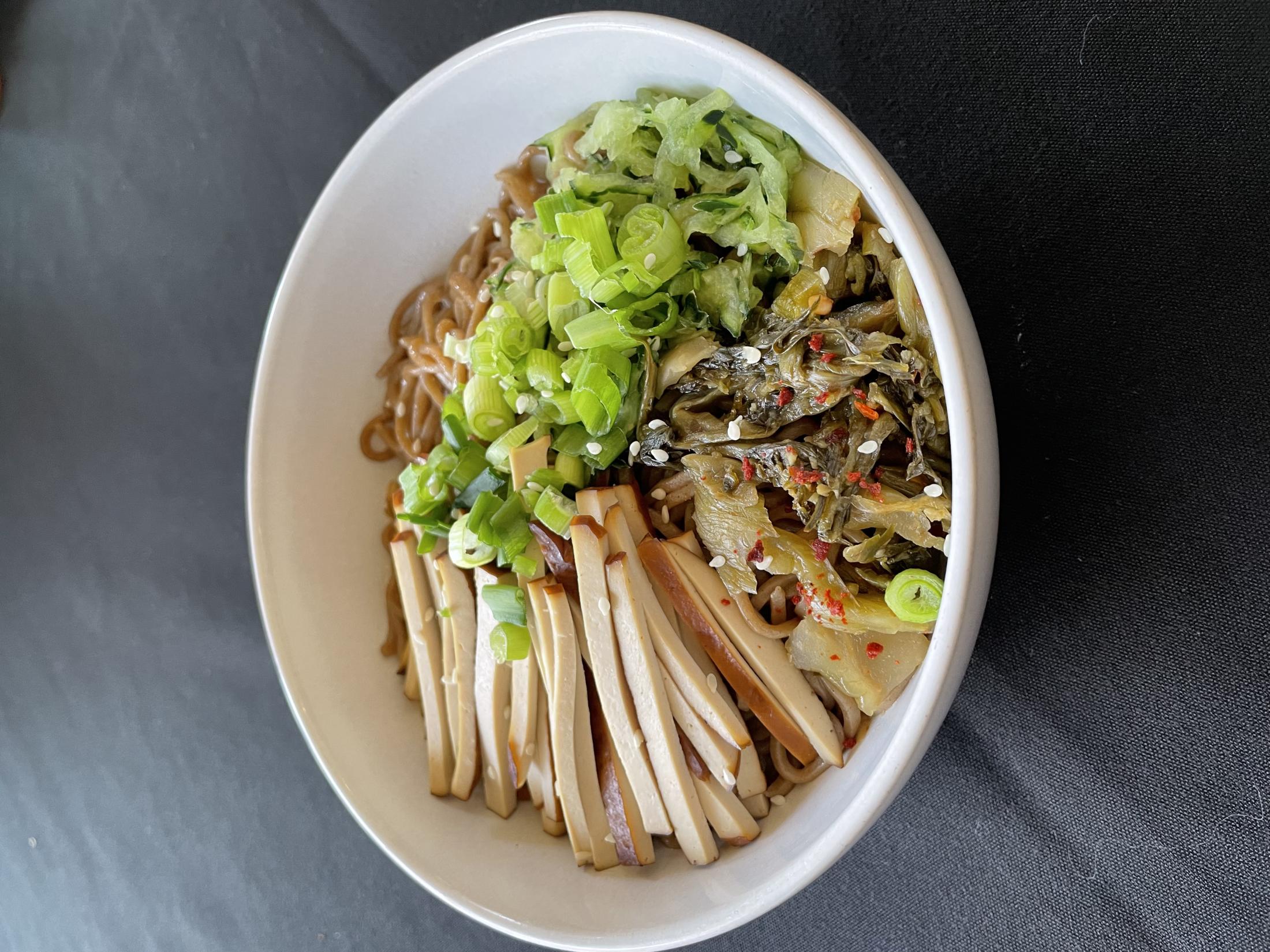
|
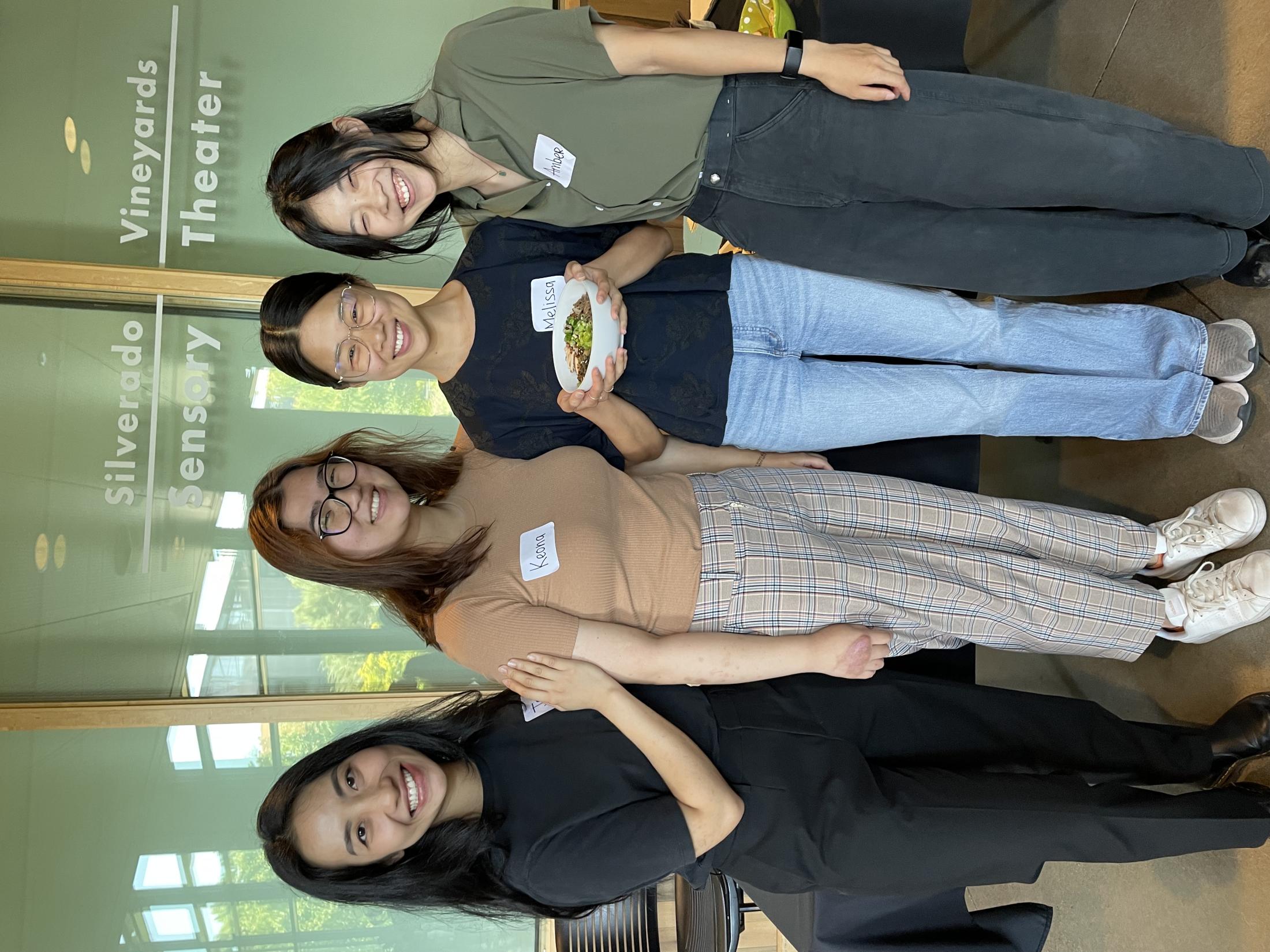
|
Collagems are frozen collagen-rich stock cubes formulated by Brit Huynh, Sieun Lee and Daniel Murphy. They had a vision to create a new way to consume a collagen supplement rather than the popular powder or pill versions currently on the market. Their solution is this animal-based collagen cube that promotes skin, joint and bone health and is made with chicken, garlic, bay leaf and water. They touted the product’s versatility; it can be melted on top of leftover meals or cooked into a fresh dish. They envision the item would be in the freezer section and have a price tag of $10.99 per item.
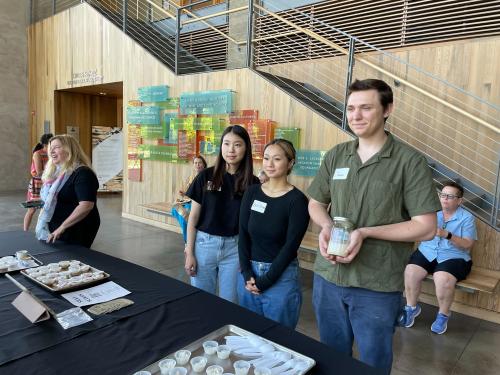
UmamiMami is a mushroom-based dip with bold flavors created by Josh Ansel, Malvis Leverant and Luca Vallesi. The group said umami, a Japanese word used to describe a savory taste, is among the top food trends in 2023, but there are no dips currently on the market with a basis of umami flavor. Their product is a gluten-free, low-calorie dip made with ingredients including mushrooms, beans and vegetables. The group said it’s “a great way to spice up your charcuterie board” or can also be spread onto sandwiches or sauteed as a pasta topping. They designed a 12-ounce container that they estimate would cost $5.88.
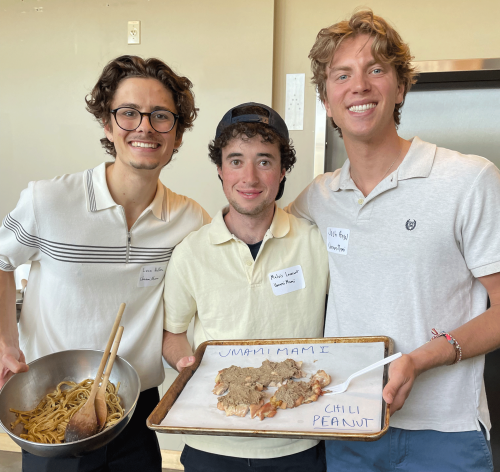
Wakara is a savory vegan waffle developed by Wendy Martinez Castaneda, Asuka Okamoto, Miu Yamamoto and Michael Zhao. Citing that many of the popular breakfast products on the market today are full of sugar, low in protein and lack essential vitamins, the team made a plant-forward, pre-cooked dish that can be an easy morning meal. The main ingredients are gluten-free flour, rice flour, fresh vegetables and okara, which is soybean pulp that’s left over after making soy milk or tofu and is high in dietary fiber and protein. The team designed a box of 10 waffles with a retail price of $4.

|

|
Silky Scoops are containers of tofu-based pudding made by Minjeong Jang, Archie Mangubat and Ching Sun. The team saw a need for high-protein, vegetarian grab-and-go food options. They created this convenient snack packed with more than 20 grams of protein. The team formulated three flavor varieties: “Silky Savory” is tofu mixed with tamari sauce, sesame oil, garlic and chili powder, agave, sesame seeds and seaweed; “Silky Sweet” is made with palm sugar syrup and sago pearls, which are small starch spheres commonly used in Asian cuisine; and “Silky Toasty” is made with condensed milk and kinako flour, which is a roasted soybean flour popular in Japanese dishes. The item would be sold in 10-ounce clear and recyclable containers at $6 each.
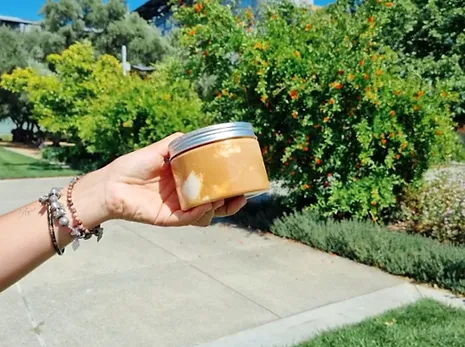
|
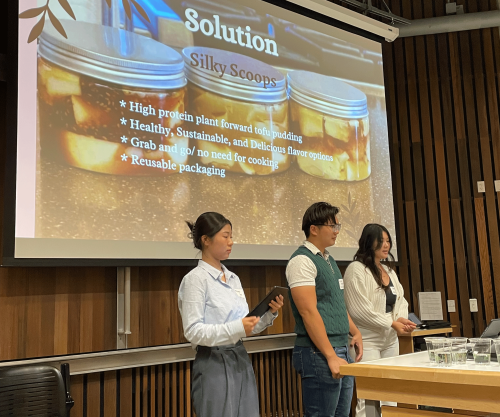
|
Media Resources
- Andrew Gravelle, Department of Food Science and Technology, agravelle@ucdavis.edu
- Tiffany Dobbyn, College of Agricultural and Environmental Sciences, tadobbyn@ucdavis.edu
